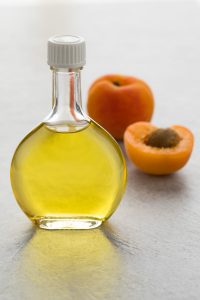Natural Remedies that Work: How to Treat Headaches with Essential Oils
Most of us have suffered from headaches before, some more than others. It is common for us to hear about friends and family around us who are currently suffering from headaches too. Headaches are one of the most prevalent medical complaints and can happen to anyone from all walks of life.
According to the World Health Organization, an estimated half of the adult population have experienced a headache within the last year.
Headaches come in different forms, from dull tension headaches to throbbing migraines.
If a headache happens often, increases in severity, or does not go away for a prolonged period of time, be sure to get it checked by a medical practitioner as it could be a symptom of a more serious underlying condition.
There are direct and indirect causes of headaches.
1) Direct
Happens because of overactivity of nerves or blood vessels in the head, or a change in chemical activity in the brain. This direct form of headaches happens by itself and is not caused by a separate condition. This kind of headaches is known as primary headaches because it is caused by the head itself and not linked to another condition.
Primary headaches include migraines, cluster headaches.
Different people have a different proneness to primary headaches. Stress and lack of sleep are some of the common factors that increase one’s odds of having a primary headache.
2) Indirect
Happens when a separate condition causes or is linked to the stimulation of the pain-sensitive nerves in the head. This kind of headaches is known as secondary headaches because they require another condition for a headache to happen.
Secondary headaches could be caused by, but not limited to, the following:
- Concussion
- Poisoning
- Brain tumor
- Bleeding in the brain
- Dehydration
- Stroke
- Meningitis
- Hangovers
- Nasal congestion
What Kind of a Headache am I Having?
Tension Headaches
The feeling of an uncomfortable pressure around your head, usually a dull steady ache.
Migraines
A throbbing pain usually on one side of the head, that typically pulsates at the speed of a beating heart.
Sinus Headaches
Caused by inflammation swelling of the sinuses, that produces mucus that drains into the nose causing discomfort.
Cluster Headaches
A sharp piercing sensation that is usually felt in the front of the head around one eye.
Thunderclap Headaches
Sudden excruciating pain that could very likely be linked to life-threatening conditions.
How Does Essential Oils Help Relieve a Headache?
Whenever we experience headaches, most of us often resort to painkillers.
Painkillers have a place in our medicine cabinet and can be used to relieve the pain and discomfort from a headache.
They are effective in most cases, but if you are looking for a safer and more natural approach, using essential oils can be a great alternative approach, or even a great complement to your painkillers.
For a mild headache, a natural alternative to treating headaches is with essential oils. Certain essential oils are able to help relieve headaches because of its analgesic and anti-inflammatory properties. These oils can be applied topically and diffused into the air, to act as an all-natural pain reliever for headaches.
Here are the preparation and procedures for the various types of headaches you can treat with essential oils.
Sinus Headaches
To relieve a sinus headache, you first need to treat the sinusitis itself. A good way to clear your sinuses is by steam inhalation with essential oils that have decongestion properties.
Prepare the following essential oils:
| Essential Oil | Amount |
| Rosemary | 3 drops |
| Thyme linalol | 1 drop |
| Peppermint | 1 drop |
| Geranium | 1 drop |

Preparing for Steam Inhalation
Heat up water enough till you see some steam, but do not let it come to a boil. For every bowl of water, add 6 drops of the blend. Make sure you also prepare a towel that is large enough to cover your head according to the application process I will be explaining next.
Application
– Place the bowl of water on a table and take a seat in front of it.
– While the water is still hot, get into a comfortable position and lean over your head above the bowl of water, while using the towel to drape over your head, covering the bowl as well.
– Remember to close your eyes during this process to protect yourself from the steam and essential oils entering into your eyes.
– Stay in that position and breathe through your nose for around 10 minutes.
A Simpler Alternative if You are Short of Time
Here is a simpler and quicker method if you are in a hurry. Use 1-2 drops of each of the following essential oils if you have them onto a tissue paper and inhale through your nose:
- Rosemary
- Geranium
- Eucalyptus radiata
Other Effective / Alternative Essential Oils
You may also add a small amount of the following essential oils to the blend that could be helpful in treating this ailment:
Tea tree, basil linalol, juniper berry, pine, cajuput, ravintsara
General and Tension Headaches
These are your common headaches and they can be easily treated with topical application of certain essential oils on key areas around the head.
Prepare the following essential oils:
| Essential Oil | Amount |
| Lavender | 3 drops |
| Peppermint | 1 drop |
| Chamomile roman | 1 drop |
Dilute with Carrier Oil
With the blend above, dilute with a pea-sized amount of carrier oil, such as:
- Coconut oil
- Jojoba oil
- Apricot kernel oil
- Almond oil
- Or any of your favorite natural carrier oil
Application
Apply the blend around your temples and across your neck near the base of your skull, and massage on those areas for 5 to 10 minutes until you feel better.
Other Effective / Alternative Essential Oils
You may also add a small amount of the following essential oils to the blend that could be helpful in treating this ailment:
Rosemary, sweet marjoram, coriander seed
Important Notes
Essential oils are potent and powerful especially due to their concentration.
Be sure not to apply undiluted essential oils to your skin whenever applying topically, unless you are certain that it is safe to do so. Else, always dilute it in a carrier oil such as jojoba oil, castor oil, grapeseed oil, coconut oil, shea butter, olive oil or other carrier oils.
Also, make sure essential oils are safe to be ingested or applied on open wounds before doing so.
Some essential oils should not be used when pregnant or breast-feeding. Always check with your doctor when unsure. It is also good practice to do a skin patch test on your inner arm to ensure you do not have any reactions to the oils.

